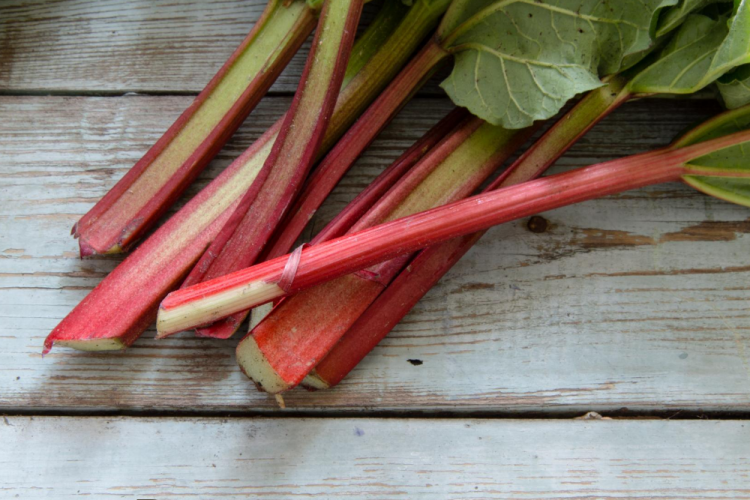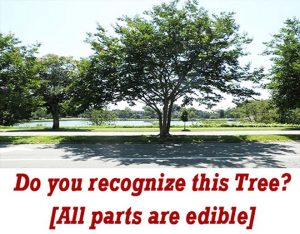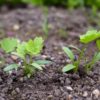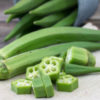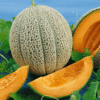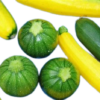If you decide to start growing rhubarb in containers then you will need to find a really large and deep container. The container will need to be at least 20” wide and 20” deep. Also the container needs to have drainage holes at the bottom.
In the bottom of the container put some stones or old pot rubble – then add top soil or potting compost or mix the soil and compost together and fill the pot.
Dig a hole in the centre of the container that is big enough for the rhubarb crown. Place the crown in the hole and cover the rhubarb crown with the soil mixture. Make sure the crown is either around 1” below the soil surface or level with the soil. Gently firm the soil around the crown with your hand.
Put the container in a sunny area of your patio or garden. Rhubarb likes to grow a sunny position but will tolerate some shade as well.
You will need to keep the rhubarb plant thoroughly watered, keeping the container moist, but do not keep it soggy wet.
Rhubarb can cope with frost so there is no need to move the container inside over the winter time. Leave the container outside and just cover the rhubarb plant with 2” of mulch such as grass clippings or composted leaves.
This will give the rhubarb plant a little protection and keep the soil in the container from drying out.
In the spring time when the rhubarb plant starts to grow again, you will need to feed the rhubarb plant either with vegetable garden fertilizer or by adding manure or compost on top of the crown before it starts sprouting stalks. This will keep your rhubarb Growing well in an in containers.

How To Harvest Rhubarb
How To Harvest Rhubarb – You should not harvest rhubarb the same year that you planted it. This is because the plant needs time to grow a strong root system. If you do start to harvest from the plant in the first year, the plant won’t grow as well and produce as many stalks in the following years.
The year after you planted the rhubarb, you can harvest some stalks around 6 stalks. After the rhubarb plant has been in the ground for a couple of years you can start to harvest your rhubarb normally.
You can harvest rhubarb when the stalks are around 10- 12 inches long. It doesn’t matter about the thickness of the stalk. The easiest way to harvest rhubarb is to hold the stalk with your hands and pull and twist as you pull it up. Alternatively, you can use a knife and cut the rhubarb stalk at soil level. It’s best not to cut below the soil surface – as you can damage the crown.
Once you have harvested the rhubarb stalks you need to cut off the leaf that is at the top of the stalk and also cut or clean off the base.
The leaf and base are composted or thrown away. People worry about the leaf as they are poisonous. But that is only if you eat them – there is NO harm when you just cut the leaf off. It’s also ok if your skin comes in contact with the rhubarb leaves. Just don’t eat them.
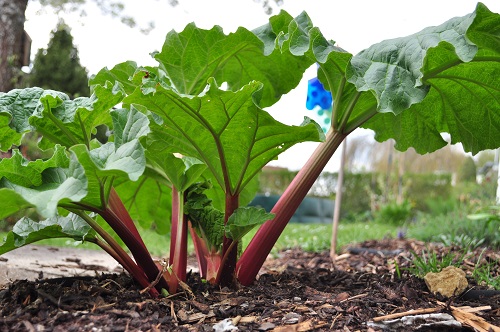
The rhubarb stalks can be used straight away or can be kept in the fridge, where they will be ok for a few days. Fresh rhubarb can easily be frozen for future use. After harvesting the rhubarb just chop up the stalks and put them in a freezer bag or a container.
You can harvest for around 2 months from your rhubarb plants. As the stalks come and they don’t seem to thicken and just stay pencil-thin then it’s the time to stop harvesting.
The stalks that are left will give your rhubarb plant time to store enough nutrients to start producing another big rhubarb crop the following year.
You’ll find that the early harvested stalk in early spring is always more tender. Stalks harvested as the season goes on are always tougher and taste sourer.
Many people reserve the early spring rhubarb harvest for pies and use the later season rhubarb stalks for jams and sauces.
Tip: You need to remove any flower stalks as you see them growing from the rhubarb plant and throw them away – they are not edible. By removing the flower stalks, you get the rhubarb plant to focus its growing energy on the edible stalk production.
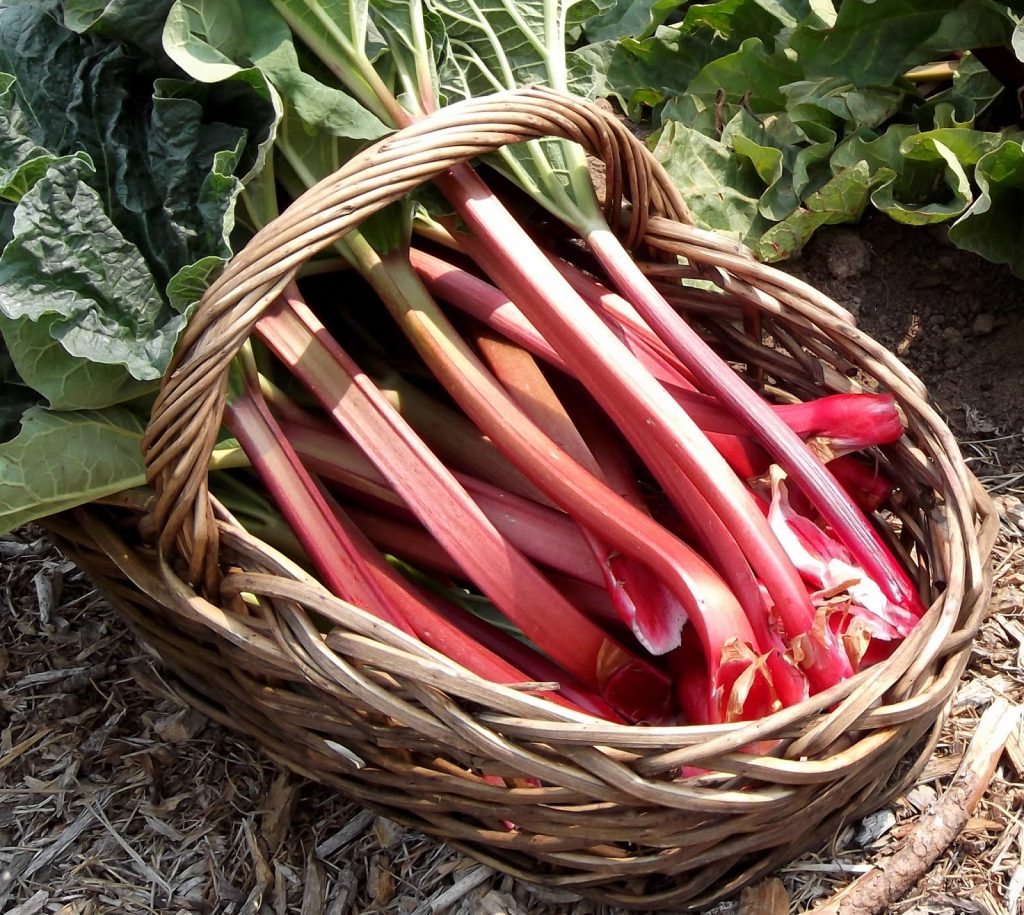
Rhubarb Varieties
There are several different types of Rhubarb Varieties available.
The stalks often have a different colour depending on the variety they range from red to green. There are also Pink varieties and these often are speckled.
People will often assume that the redder rhubarb stalks varieties are sweeter than the greener stalk varieties; however, there seems to be no link between colour and sweetness of the rhubarb.
Here are some popular rhubarb varieties:
- Ace of Hearts – a rhubarb variety that is perfect for the smaller garden. It has beautiful red and purple hearted shaped leaves.
- Champagne – a very popular rhubarb that is often used for forcing. This rhubarb variety is sweet-tasting and has pink-tinged stalks.
- Fultons Strawberry Surprise – the stalks of this rhubarb are beautiful they have vivid red colour. This variety also isn’t as acid. RHS Wisley trials voted it the best-flavoured rhubarb.
- Mammoth Red – as you can guess from the name this is a giant rhubarb and can grow up to 5ft high. If you decide to grow this variety you better have plenty of space in your garden.
- Stockbridge Arrow – this is an early variety that has become known as a – quality rhubarb. Gives you a long season of tasty and tender red stalks to eat.
- Victoria – a great old classic variety that many gardeners grow. This rhubarb plant produces greenish stalks. It is an easy rhubarb variety to grow and is non-stringy.
There are many more different types of rhubarb varieties and I will add more on as time goes on. Choose a variety that is right for you.
